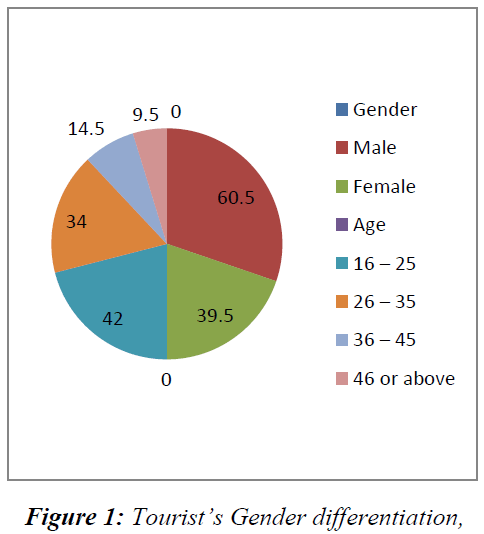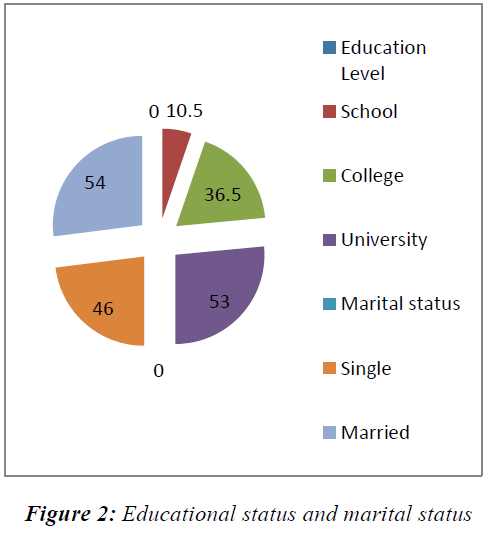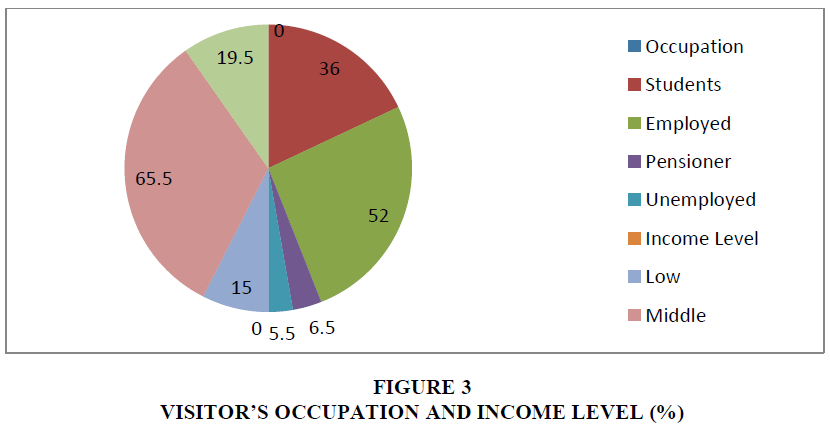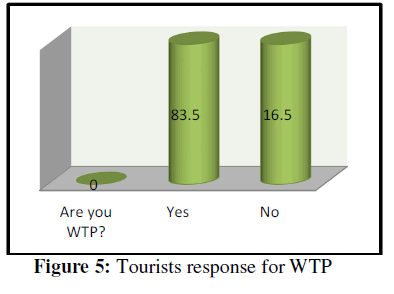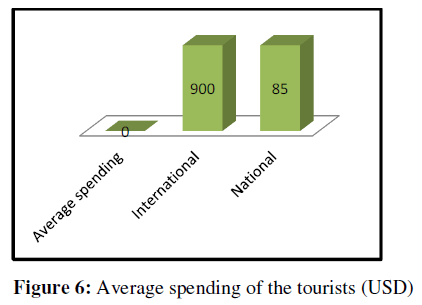Research Article: 2020 Vol: 24 Issue: 2
Tourists Attitude towards Cultural Heritage and Halal Products: A Case Study of Lahore
Muhammad Hassan Mahboob, University of Agriculture, Pakistan
Muhammad Ashfaq, University of Agriculture, Pakistan
Asad Afzal Humayon, Comsats University Islamabad, Pakistan
Mustafa KAN, Kirsehir Ahi Evran University Kirsehir, Turkey
Abstract
The basic purpose of this paper was to assess the tourist’s willingness to pay (WTP) for cultural heritage, their attitude toward cultural heritage, halal products (HPs), and estimate the average spending of the tourists. Moreover, the tourist's satisfaction level towards halal products. It also analyzed buying behavior, the risk associated, and preferences regarding halal food products. The data were collected in the last quarter of 2019 with the help of a well-prepared questionnaire, and respondents were selected through simple random technique. The contingent valuation method was used to estimate the mean of WTP for cultural heritage visits, and the question was in the form of dichotomous choice (yes/no). The results are drawn based on primary data using a survey of 200 tourists. Binary logistic and ordinary least square (OLS) models were applied to estimate the WTP. These statistical analyses have done with the help of MS Excel (socio-economic) and statistical packages for social sciences (SPSS) WTP. The majority of the tourists were WTP and on average USD 900 and USD, 85 were the spending of the international and national tourists respectively. Tourist’s income positively, cost, and distance negatively related to his/her home to cultural heritage were the significant determinants of WTP of the tourists. Results show that tourists preferred halal products having ‘Halal tags’ (65%), environmentally friendly (10%), healthy (13.5%), and alcohol-free (15.5%). Income was the major factor having positive and significant at (1%) impact on WTP. Food authorities should make sure that all tourists get the quality products having information along with ‘halal tag’ and the service provider should have adequate education level so that they can communicate with tourists easily and can provide better services.
Keywords
Cultural heritage, Halal products, Tourism, Socio-economic, Willingness to pay, Pakistan
Introduction
Badshahi Mosque or "Emperor's Mosque" and Royal fort were officially listed by United Nations Educational, Scientific, and Cultural Organization (UNESCO) as one of the world heritage sites (WHS) on 14 December 1993. Badshahi mosque is a Mughal era mosque located in Lahore, capital of the province of Punjab-Pakistan. The Badshahi Mosque is situated west of Royal Fort next to the periphery of the walled city of Lahore. Badshahi Mosque and Royal Fort are considered as one of Lahore’s most iconic milestones.
Badshahi Mosque and royal fort have its uniqueness to attract the tourists, regarding architecture and history. Cultural heritage is an inspiring factor in people’s travel and affects tourism both positively and negatively ways (Dora, 2012). Since the beginning of human history, people have visited away from home for multiple purposes. In general, tourism is the process by which individuals travel from their place of residence to other areas, whether within or outside the country. The concepts of culture, rural, and tourism are multidimensional and interrelated; consider culture to include family patterns, folklore, social customs, museums, monuments, historical structures, and landmarks. Others include wilderness areas, valued landscapes, natural history, buildings, and artifacts as part of cultural tourism. Many other places at Badshahi Mosque and royal fort are also having the ability to attract the (national and international) tourists regarding their visits at historical sites. Both heritages have their uniqueness to attract tourists, regarding the architecture and the history of the Royal Fort and Badshahi Mosque. Cultural heritage in Lahore holds a massive prospective for the country since Lahore is known for its well-preserved culture and heritage.
The meaning of ‘halal’ is, it must be liberated from non-halal ingredients or substances that include pork and alcohol. Halal is an uncomplicated five words but covers a large range of description. If the food is dangerous to health, it is also well-thought-out as not Halal. Halal food has to protected or/and of superior quality which is illustrated through the word ‘thoyyiban (good quality)’. The concern of Halal products attracts argues in a variety of aspects in our lives. Under the Shariah law the foodstuffs that we use must be disinfected, unpolluted, clean, and of superior quality or also known as ‘halal toiyyibban’.
As a Muslim country, Pakistan doesn’t allow prohibited foods and the tourists’ feel safe in Pakistan regarding halal products they consume. All the products available in hotels/restaurants and at cultural division places are halal and there is no miss-perception about its availability in Pakistan. Halal products are one of the important aspects that control tourists' satisfaction with a destination, as it tolerates for more satisfying sensory understanding by utilizing a tourist’s mind.
Spending on products is an important factor in the tourist financial plan which is one-third of tourism expenses and a primary source of revenue earning from tourism (Meler & Cerovic, 2003). The Muslim tourists’ spending is rising over time in Pakistan as well as globally and this figure becomes remarkable. Total tourists arrival to Badshahi Mosque and Royal Fort come in huge numbers i.e. almost around 10 million annually and this number is increasing annually.
Tourist activities in an expression of their feelings in the direction of reliable tourism, tourist location awareness, and tourist faith in culture and safeguarding of a World Heritage City (WHC) and their attitude toward halal products were surveyed. The primary objectives of the paper are to study the socio-economic characteristics of the tourists, to estimate the WTP of the tourists for visitation of cultural heritage; and to evaluate the tourist’s attitude towards halal food and cultural heritage. Further, it also finds the average spending of national and international tourists.
Literature Review
According to The World Tourism Organization (WTO) (1992) tourism is "a set of activities carried out by visitors during travel and moving to different places outside their usual environment for expediency or other reasons Pierre & Balfet (2007). Tourist’s attitude towards cultural heritage showed more than a few profiles and distinctiveness natural site’s attributes to inspiration to visit heritage places rather than natural sites. How to make tourists more interested in visiting the core monument at heritage sites, rather than just sightseeing. In modern era tourism has been increased both nationally and internationally for experiencing a different culture and history (Vander-Stoep 1996).
Peterson (1994) revealed three major motives for visiting historic sites: to learn to enjoy a cerebral experience, to experience a different time or place, and to split with others or teach children the history of the cultural heritage. Heritage tourism is also described as a part of visitors who are extremely provoked by performing and cultural exhibitions, visual arts, and other related attractions. Cultural tourism includes visiting historic or archeological sites, visiting festivals, watching conventional dances or ceremonies, or simply shopping for handcrafted talent.
The Prophet Muhammad (upon him be peace and blessings) said The Halal and haram are very clear, and they are matters unclear that are unknown to most people. Halal and haram are the concepts that are related to the Muslim world, even if today these concepts are used by non-Muslims, both in consumption and in studies Marzuki et al., (2012); Aziz & Chok (2013). The basic role of halal and haram could be defined through free and nonfree behaviors of the Muslims in the field of movement. Halal relates to free ones but forbidden ones are forbidden indicates to what happened (Ayengin, 2017). Halal food supply chain execution according to Wan Marhaini Wan Omar (2017) is achieved by these by cleanliness, Islamic dietary law, safety, physical segregation, storage and transport, material and handlings, ethical practices, packing and labeling, training and personnel, innovative capability, and resource availability.
Consumer’s attitude towards halal products is the key driver for the certified halal firms which address both the local and international markets. There is a lack of proper certification and promotion of halal food in the market. The question arises about the certified halal products even certificates created do not have standards among themselves, so causes and problems to continue in providing trust to consumers (Torlak, 2012).
Khan et al. (2020) explored the set of determinants that affect halal food purchasing intensions and measured the ranks of these determinants. He founded knowledge and attitudes were the weak drivers on the other hand; the name of the brand; religiosity and the price were the strong drivers of halal food purchasing. Kurtoğlu & Çiçek (2013) explored that consumer's attitudes, perceptions, and expectations regarding halal food differences in the context of demographic variables were analyzed, and it is reported that the demographic variables vary In the form of income level, age, gender, and educational status.
Methodology
A total of 200 respondents were interviewed using well-structured questionnaires. The sample size consisted of 200 tourists. Data were collected during the last quarter of 2019 and the first quarter of 2020. Two questionnaires were developed, one for tourists to collect information regarding their attitude toward halal products, cultural heritage, and their WTP for visitation. The contingent valuation method brings out the market valuation of a non-market good to compute total preservation value. Contingent valuation method (CVM) has been used which contains both constituents of use and non-use (Echeverria, 1995). The principle of CVM was used for gathering the data of tourist's willingness to pay for the visitation of cultural heritage. So, this paper employed the Contingent Valuation Method. Tourist’s WTP was estimated through two different models, binary logistic regression and ordinary least square (OLS). Binary logistic regression employed because responses for WTP were in yes and no, and OLS was applied because the final bid (a fixed sum of money) was also given to respondents. Determinants of WTP included gender, age, income; total cost, and distance from the respondent’s residence, the functional form of the models is given below in equation.


Where Y = Final bid (Dependent variable), Yi = Dichotomous variable (Yes and No)
Bis = Coefficients to be determined, D1 = Gender (1, 0)
Xi = Independent variables like age, income, total cost, and distance
Results and Discussion
The following Figures 1, 2, and 3 charts present the socio-economic characteristics of the visitors in percentages.
The results show that (60.5%) respondents were male and (39.5%) were female. They were predominately young (42%) and middle-aged (34%). More than half (53%) of respondents got an education at the university level. The majority of the respondents were married (54%) and (46%) were single. According to their occupation, most of the respondents were students (36%), 17.5% were government employees and 21% were employed in the private sector. The majority of respondents were belonging to middle and high-income groups (> Rs. 70 thousand per month).
The above Table 1 shows, the majority of the tourists accompanying by friends 42.5%, and the other tourists were alone 7%, with family 36.5%. There are so many attractive places at Royal fort and Badshai mosque, so the majority of the tourists liked the museum 35%, and 27.5% tourists liked the Tomb of ALLAMA IQBAL known as the spiritual father of Pakistan, only 17.5% were attracted to the outer walls of the CH. Question asked about the cultural history and the architecture of the CH, more than half 77.5% tourists visited because of the cultural history and other tourists visited to see the architecture of the CH. 54.5% of tourists knowing CH and 45.5% have not much knowledge regarding CH. Many tourists came very first time or had one or two visits but very few tourists who came more than half of the dozens. Other responses are given below in Figure 4.
| Table 1 Tourist’s Attitude Toward Cultural Heritage (CH) | |||
| Accompanying persons | Frequency | Relative frequency | Percentage |
| Alone | 14 | 0.07 | 7 |
| Family | 73 | .365 | 36.5 |
| Trip | 28 | .14 | 14 |
| Friends | 85 | .425 | 42.5 |
| Main attractive places at CH | |||
| Tomb of Allama Iqbal | 55 | .275 | 27.5 |
| Mosaic work | 40 | .20 | 20 |
| Museums | 70 | .35 | 35 |
| The Outer Wall | 35 | .175 | 17.5 |
| Tourist's preferences to a destination's cultural history or architecture | |||
| Cultural history | 155 | .775 | 77.5 |
| Architecture | 45 | .225 | 22.5 |
| Knowledge about cultural heritage | |||
| Yes | 109 | .545 | 54.5 |
| No | 91 | .455 | 45.5 |
| Number of visits | |||
| 1 to 3 times | 140 | 0.70 | 70 |
| 3 to 5 times | 50 | 0.25 | 25 |
| More than 5 times | 10 | 0.05 | 5 |
Tourist's attitude toward Halal products is depicted in Table 2. The majority (65%) of tourists were uncertain regarding Halal products due to no information/tag on the product. Some tourists faced trouble during purchasing a halal product but majorities (78.5%) were happy and did not confront any problem. Tourists preferred halal products having 'Halal tags', environmentally friendly, healthy, and alcohol-free. About 50% of respondents read product information all the time while others did not read the ingredients. The majority of the tourists (85%) were comfortable regarding stay in the hotels. Tourists were satisfied with the performance of halal food authorities.
| Table 2 Tourist’s Attitude Toward Halal Products | |||
| Tourist’s attitude | Frequency | Relative frequency | Percentage |
| Do you have any uncertainty during the purchasing of a product without a halal product tag? | |||
| Yes | 130 | 0.65 | 65 |
| No | 70 | 0.35 | 35 |
| Have you faced any difficulty during the purchasing of a product? | |||
| Physical issue (Distance) | 10 | 0.05 | 5 |
| Time spending | 5 | 0.025 | 2.5 |
| Financial | 8 | 0.04 | 4 |
| Quality | 20 | 0.10 | 10 |
| No trouble | 157 | 0.785 | 78.5 |
| What kind of products do you prefer most? | |||
| Halal tag | 85 | 0.425 | 42.5 |
| Environmental friendly | 20 | 0.10 | 10 |
| Good for health | 27 | 0.135 | 13.5 |
| Alcohol-free | 31 | 0.155 | 15.5 |
| All | 37 | 0.185 | 18.5 |
| Before purchasing a product, do you read the ingredients of the product? | |||
| Yes | 101 | 0.505 | 50.5 |
| No | 99 | 0.495 | 49.5 |
| In hotels, do you feel comfortable? | |||
| Yes | 170 | 0.85 | 85 |
| No | 30 | 0.15 | 15 |
| Do you have awareness regarding halal products and haram products? | |||
| Yes | 165 | 0.825 | 82.5 |
| No | 35 | 0.175 | 17.5 |
| Role of halal food authorities | |||
| Satisfied | 172 | 0.86 | 86 |
| Not-satisfied | 28 | 0.14 | 14 |
The following figures 5 and 6 shows the tourists WTP for cultural heritage and their average spending during the visit. The average spending by a national visitor for cultural heritage was USD 85 while by international tourists it was USD 900. The majority of the tourists were WTP for entrance fees (90%) while (10%) were not interested to pay entrance fees.
The binary logistic model and ordinary least square (OLS) model results are presented in (Table 3). Different variables were taken to estimate the tourists’ WTP for cultural heritage. Income was the major factor that has a positive and significant impact on the WTP amount in both models; which means as income increases than tourists’ WTP also increases for visitation cultural heritage, which will be beneficial for the government to utilize that money for the development of cultural heritage. According to Chen (2015) income positively relates to WTP; Other variables were not having a significant impact of WTP; total cost shows that if the total cost of the visit increases than tourists don’t travel towards cultural heritage.
| Table 3 Results of Logistic Model and OLS | |||||
| Variables | Binary logistic | OLS | |||
| Dependent variable | WTP (Yes/No) | Final bid | |||
| Independent variable | Β | Std. | Β | Std. | T |
| Gender (0 for female, 1 for male) | 0.26NS | 0.45 | -0.51NS | 1.29 | -0.42 |
| Age | -0.006NS | 0.02 | 0.025NS | 0.06 | 0.67 |
| Income | 0.00014*** | 0.000034 | 0.00042*** | 0.00003 | 12.24 |
| Total cost | -0.000071** | 0.000029 | -0.0000007NS | 0.00006 | -0.12 |
| Distance | -0.001* | 0.001 | 0.005*** | 0.001 | -3.55 |
| Intercept | -4.99 | 1.60 | 3.37 | 2.66 | 1.26 |
| Sample size | 200 | 200 | |||
| R2 | - | 0.63 | |||
| Durbin-Watson | - | 1.98 | |||
| F-stat | - | 66.25 | |||
| Percentage predicted correctly | 83.5 | - | |||
| Log. (L) | 138.20 | ||||
| Chi-square | 106.43 | ||||
Distance also found a negative association with tourist’s WTP, as tourists came from long distanced areas they don’t prefer to visit cultural heritage. Overall, these results are according to economic theory, a-priori expectations, and model specification. The overall explanatory power of the model is 63.10 %; the value of Durbin-Watson is also good. F-stat value is also significant.
Conclusions and Policy Recommendations
Many studies have demonstrated tourists' attitudes in many aspects including cultural heritage, halal products, and also estimated their WTP. The cultural heritage of Lahore (Badshahi Mosque & Royal fort) has the potential to attract tourists all over the world due to his historical background. Male tourists came in large numbers and were matured in age. Educational factors played an important role in their attitude toward cultural heritage. The income level of the tourists was reasonably good because the majority of the tourists were employed, and their spending during visits was significantly valuable for the boost of the local economy, Service providers, and small business enterprises. Tourists were well awarded regarding the history of these heritages and came with friends, family, and trips even many tourists came alone at these heritages. The history and the architecture of the CH have so much uniqueness for the tourists to attract them to visit more than once. The majority of the tourists were uncertain regarding Halal products due to no information/tag on the product. Tourists preferred halal products having 'Halal tags', environmentally friendly, healthy, and alcohol-free. Income, the total cost of the visit, and the distance are the prominent determinates of WTP.
Based on the results of this study, several recommendations can be made to increase tourists at cultural heritages. Collected funds should be used to preserve and protect cultural heritage while also improving public facilities to attract the tourist. Food authorities should make sure that all tourists get the quality products having information along with ‘halal tag’. Only licensed restaurants and food vendors will be allowed to do their business. Tourist’s spending plays an important role in the economy, therefore more facilities and services should be provided to the tourists for the boost of the local economy.
References
- Aziz, Y. A., & Chok, N.V. (2013). The role of Halal awareness, Halal certification, and marketing components in determining Halal purchase intention among non-Muslims in Malaysia: A structural equation modeling approach. Journal of International Food & Agribusiness Marketing, 25(1), 1-23.
- Chen, W.Y. (2015). Public willingness-to-pay for conserving urban heritage trees in Guangzhou, south China. Urban Forestry & Urban Greening, 14(4), 796-805.
- Dora, D.V. (2012). Setting and blurring boundaries: Pilgrims, tourists, and landscape in Mount Athos and Meteora. Annals of Tourism Research, 39(2):951-974.
- Echeverria, T.W. (1995). Sea-ice conditions and the distribution of walleye pollock (Theragra chalcogramma) on the Bering and Chukchi Sea shelf. Canadian Special Publication of Fisheries and Aquatic Sciences, 131-136.
- Khan, W., Akhtar, A., Ansari, S.A. & Dhamija, A. (2020), "Enablers of halal food purchase among Muslim consumers in an emerging economy: an interpretive structural modeling approach", British Food Journal, Vol. 122 No. 7, pp. 2273-2287. https://doi.org/10.1108/BFJ-08-2018-0528
- Kurtoğlu, R., ve Çiçek, B. (2013). Tüketicilerin Helâl Ürünler Hakkındaki Algılama, Tutum ve Beklentilerini Tespit Etmeye Yönelik Bir Araştırma. Eskişehir Osmangazi Üniversitesi İktisadi ve İdari Bilimler Dergisi, 8(3), 181-205.
- Marzuki, S.Z.S., Hall, C. M., & Ballantine, P.W. (2012). Restaurant managers' perspectives on halal certification. Journal of Islamic Marketing.
- Peterson, K. (1994). The heritage resource as seen by the tourist: The heritage connection. In (ed.) van Harssel, J. Tourism: an Exploration, Third Edition. Englewood Cliffs, NJ: Prentice Hall.
- Pierre, Jean & Balfet, Michel. (2007). Management de tourisme (tourism management), 2nd edition, Pearson Education France, p.4
- Torlak Ö, (2012). İslam Ülkeleri Arasında Helal Ürün Pazarlama Potansiyeli, Problemleri ve Çözüm Önerileri, Tüketici ve Tüketim Araştırmaları Dergisi, Cilt 4 Sayı 2, Aralık, 1-10.
- Vander-Stoep, G.A., & J.W. Roggenbuck. (1996). Is your park being “loved to death?”: Using communications and other indirect techniques to battle the park “love bug.”. Congestion and crowding in the National Park System: Guidelines for management and research.
- Wan Omar, W. (2017). Developing a model for halal food supply chain implementation.
